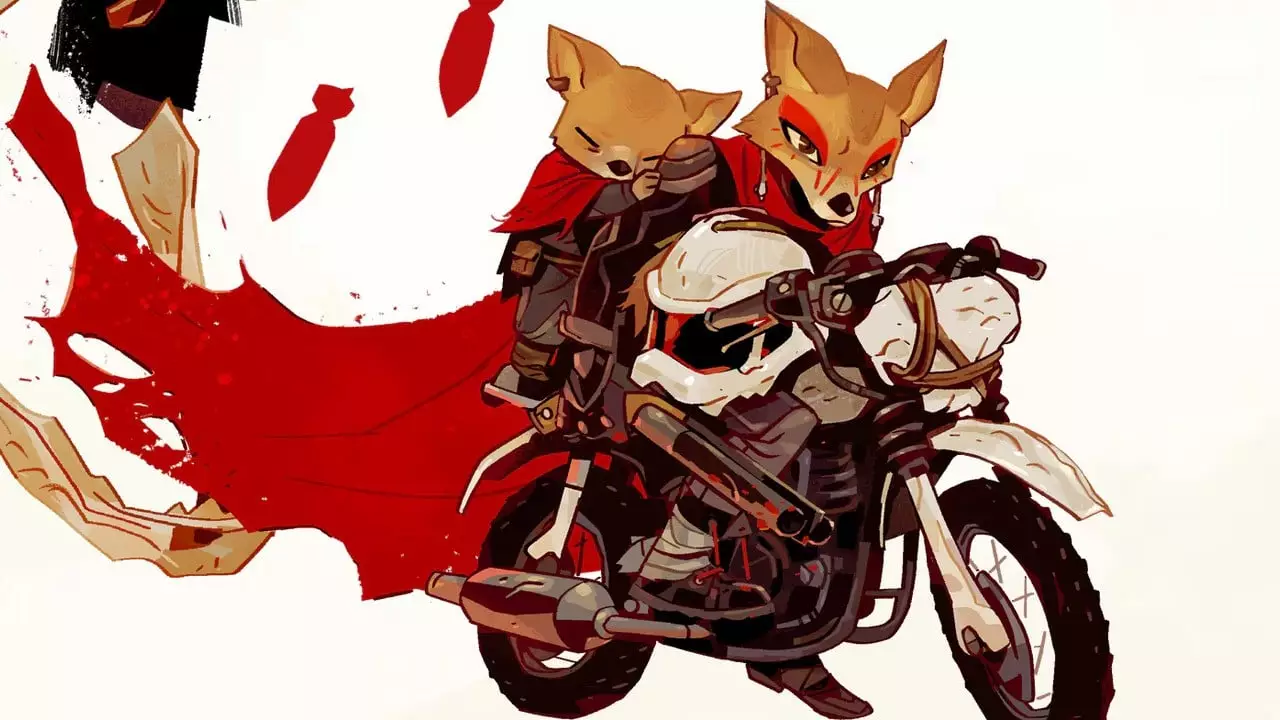In the expansive world of video games, the Metroidvania genre has recently been saturated with countless titles, each vying for attention. Yet, amid this crowded field, “Laika: Aged Through Blood” stands out by daring to innovate and redefine the rules of the genre. While other games have made commendable efforts to differentiate themselves, Laika takes a bold step by merging motocross mechanics with classic Metroidvania elements, creating a gameplay experience that is both thrilling and refreshingly distinct.
What truly sets Laika apart is its approach to traversal. Unlike traditional Metroidvanias that often confine players to segmented rooms and predictable pathways, Laika offers vast, open landscapes where speed and agility are paramount. Players are encouraged to tear through these environments on a motorcycle, mastering high-speed maneuvers and performing daring aerial flips. This design not only challenges players’ reflexes but also keeps them constantly engaged with the world around them; one miscalculation could lead to a swift demise, a choice that keeps the adrenaline pumping.
The extent of this mechanic is amplified by the presence of hostile enemies scattered throughout the world. The anthropomorphic Bird clan, with their relentless pursuit of Laika, adds a layer of urgency that keeps players on their toes. This constant threat transforms what could be a monotonous exploration into a dynamic struggle for survival, demanding both quick reflexes and strategic planning.
Nestled within this adrenaline-fueled gameplay is a poignant narrative. As Laika ventures out from her desolate home, “Where We Live,” the stakes escalate after a tragedy forces her to confront both her enemies and her obligations as a mother. The storyline addresses grim themes and showcases a world that is unflinchingly dark; it’s a context not often explored in games with an otherwise colorful visual style. The contrast between the vivid art design and the somber themes is striking, making the journey more than just a quest for survival—it’s a harrowing odyssey of loss, redemption, and resolve.
In many ways, the aesthetic intricacies of Laika are as crucial as the gameplay. While the game may appear whimsical with its animated animals, there is an undercurrent of brutality that permeates the entire experience. NPCs litter the dialogue with harsh language, and the gruesomeness of each encounter serves as a grim reminder of the world’s ruthless nature. Confronting these elements creates a sense of maturity that resonates with players, steering the game firmly away from being child-friendly despite its charming visuals.
Complementing Laika’s striking visuals is an exceptional soundtrack composed by Beatriz “Beícoli” Ruiz-Castillo. This score elevates every moment, from high-octane bike races to quieter interludes where the player can take in the world’s beauty. The vocal elements of the soundtrack contribute to an immersive experience, enveloping players in the rich tapestry of the game’s post-apocalyptic setting. This level of audio craftsmanship stands as one of the most impressive in recent memory, deserving praise on its own merit.
Of course, immersive audio and visual elements would fall flat without solid gameplay. Fortunately, Laika ensures that each mechanic meshes seamlessly with the frantic pace of the narrative. The controls may initially seem unorthodox to players accustomed to traditional Metroidvania mechanics, but they quickly become intuitive with practice. Balancing speed and weaponry, players learn to navigate challenges that unfold mid-air—a daring twist that keeps every encounter fresh and exhilarating.
Combat in Laika is no mere sideshow but rather a central pillar of the experience. Players will begin their journey armed with a limited arsenal, and the game cleverly encourages mastery of both shooting and stunt mechanics. The ability to perform flips allows not only for stylish evasion but also acts as a critical survival tool—reloading weapons or deflecting incoming shots adds layers to the combat dynamic that are seldom seen in the genre.
Yet, this complexity comes with its challenges. The game is punishing in its difficulty, rewarding skillful play while punishing mistakes with swift deaths. However, the generous distribution of checkpoints ensures that frustration remains manageable, enabling players to engage with the game’s high stakes without feeling disheartened.
While Laika: Aged Through Blood has faced some performance hiccups upon its release—issues that may dampen the experience—it still manages to carve out its own niche in the Metroidvania landscape. The innovative blend of motocross dynamics with engaging narratives and stunning aesthetics is a formula that could redefine expectations for future titles.
As players dive into this beautiful yet brutal world, they are not just playing a game; they are engaging in a unique experience that pays homage to the Metroidvania genre while boldly forging a path of its own. With its compelling narrative, tightly integrated gameplay mechanics, and unparalleled soundtrack, Laika stands poised to be a defining title for years to come, possibly even earning its place among the classics of modern gaming.


Leave a Reply